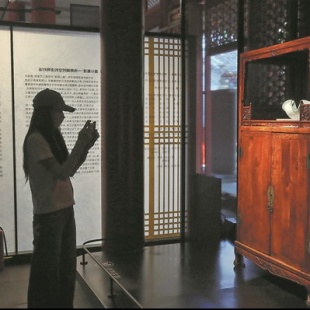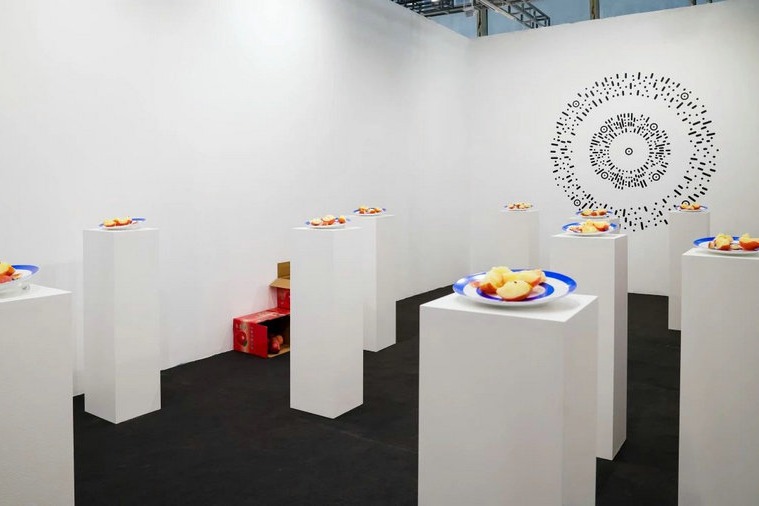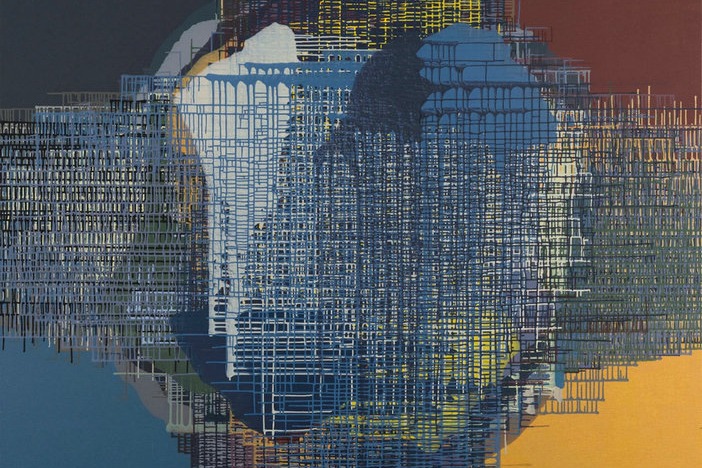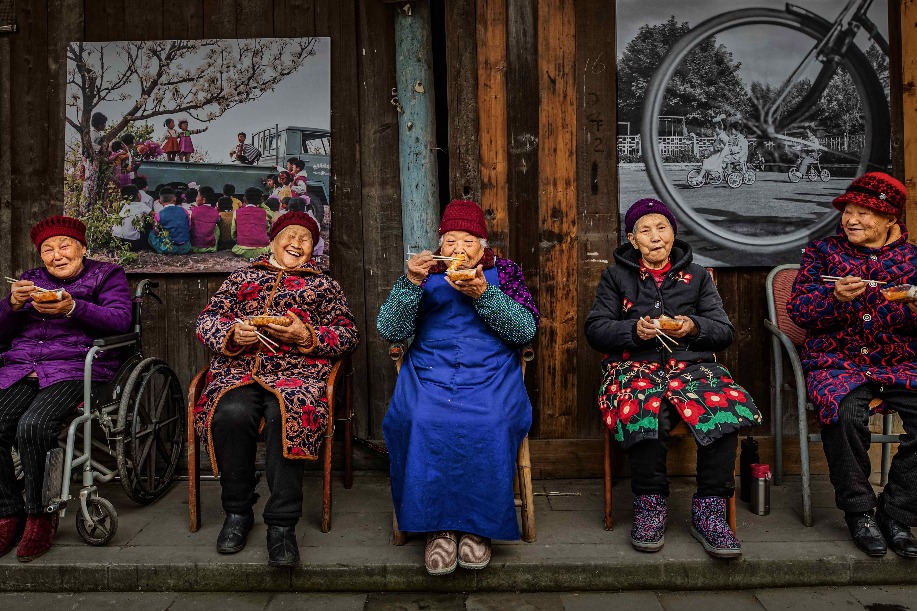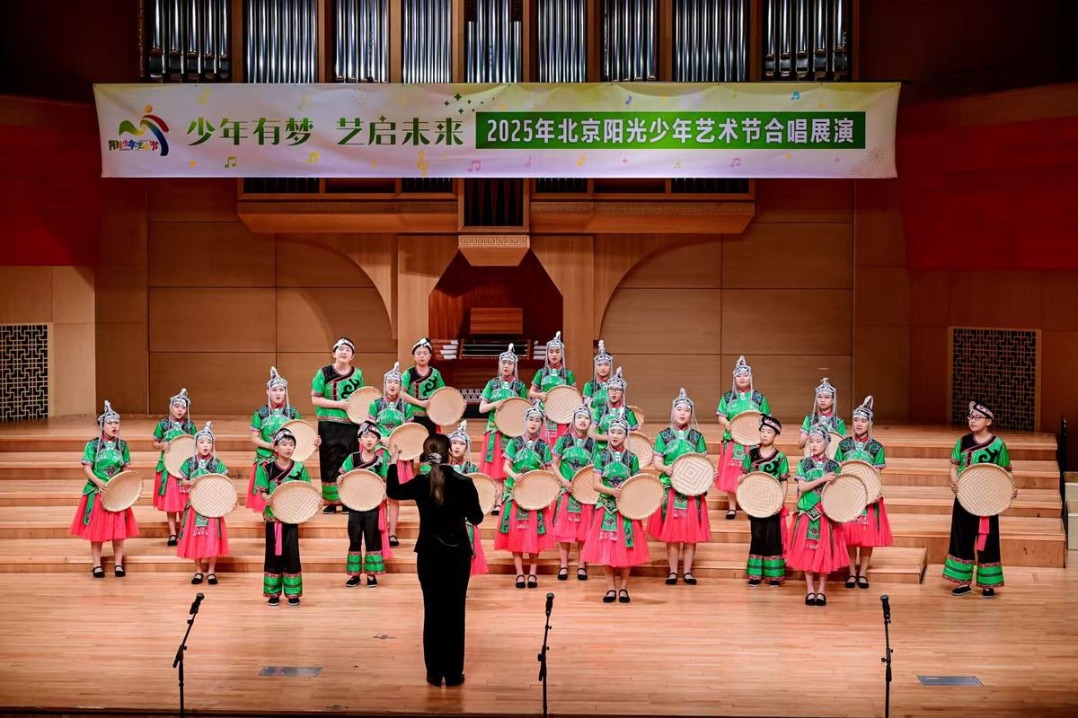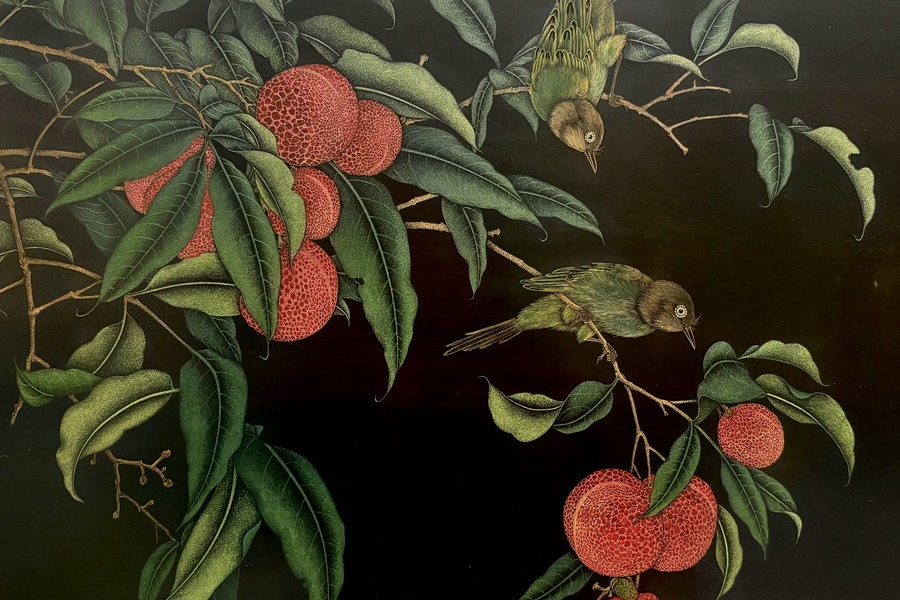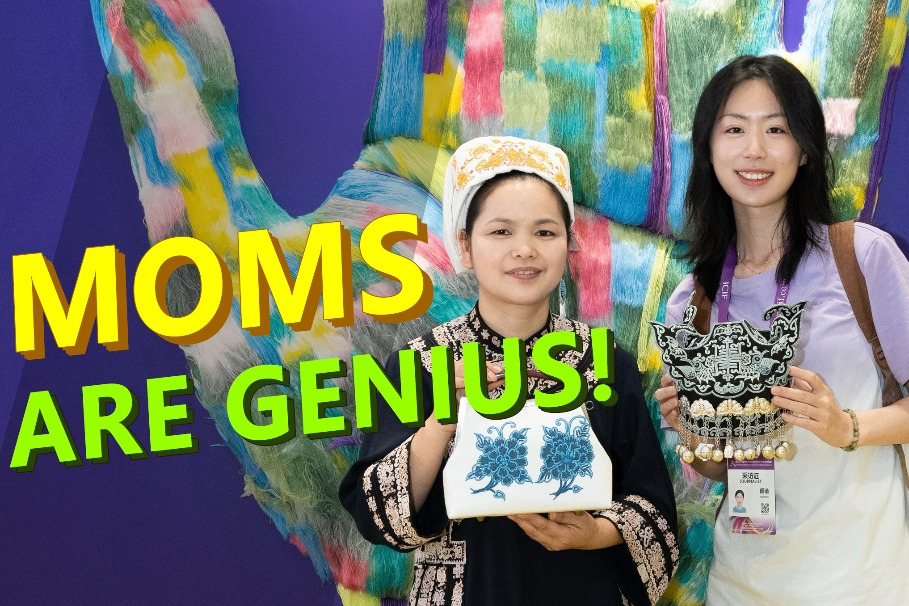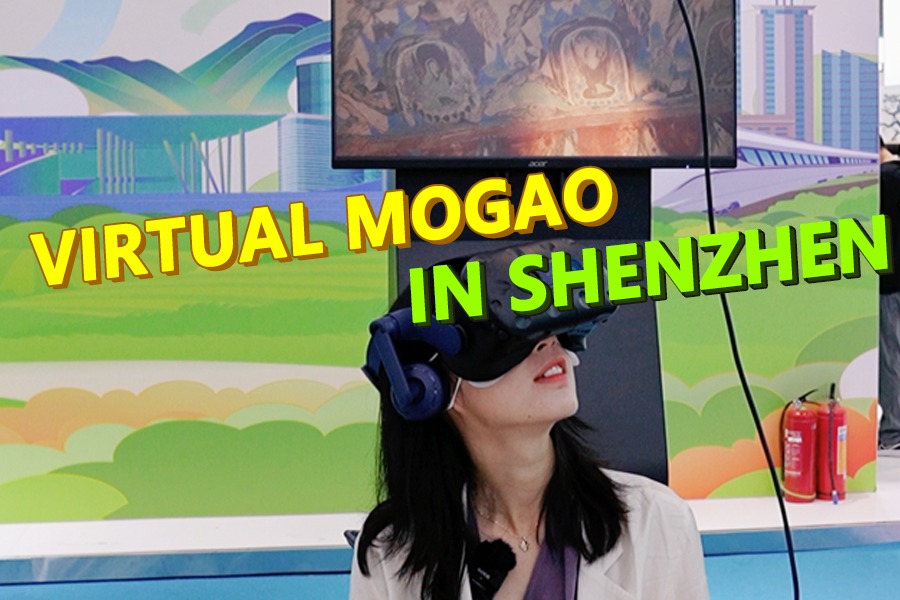Dialogue between modern skills and tradition

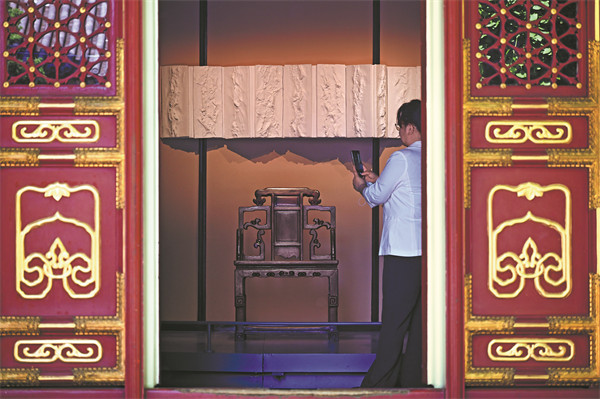
Exhibition showcases the careful attention to detail that weaves through the ages, Yang Feiyue reports.
A magnificent red rosewood meditation chair, its segmented backrest showcasing exquisite Ming Dynasty (1368-1644) joinery techniques, gives one a good impression of the past's enduring craftsmanship legacy.
Once carefully preserved in the Prince Kung's Palace Museum's collection, this furniture masterpiece now anchors a groundbreaking exhibition that ushers in a dialogue between the past and present.
The chair's distinctive wide seat, designed for cross-legged contemplation, features elegant details: woven matting makes sitting more comfortable while gracefully arched aprons flow into outward-splayed legs that taper with precision.
Its quiet grandeur creates a striking juxtaposition with a neighboring contemporary artwork, a vibrant 2024 porcelain painting depicting a fish basket-carrying deity.
This thoughtful pairing is among the highlights of the Beauty of Simplicity section in Objects as Vessels of Wisdom, an exhibition that interweaves 29 Ming and Qing (1644-1911) furniture pieces from the museum's collection with 28 avant-garde ceramic works by 18 modern artists.
The exhibition, until July 6, is curated jointly by the museum and Bai Ming, a professor at Tsinghua University's Academy of Arts and Design and director of the China Artists Association's Ceramic Art Committee.
It explores the philosophical and aesthetic dialogue between classical Chinese craftsmanship and modern artistic expression, according to the organizers.
"In the philosophy of the Chinese craftsmanship tradition, the concept of objects as vessels of wisdom transcends mere technical standards — it encodes the very DNA of civilization," Bai says.
This exhibition transforms museum artifacts from stored objects into "living presences", while allowing contemporary ceramics to travel through temporal portals opened by their antique counterparts, he explains.
Traditional mastery reflected through porcelain, celadon and polychrome ware, sculptural and painted works is integrated with contemporary innovation characteristic of planar and three-dimensional forms, individual pieces and installations, and expressive, conceptual, abstract approaches, Bai notes.


